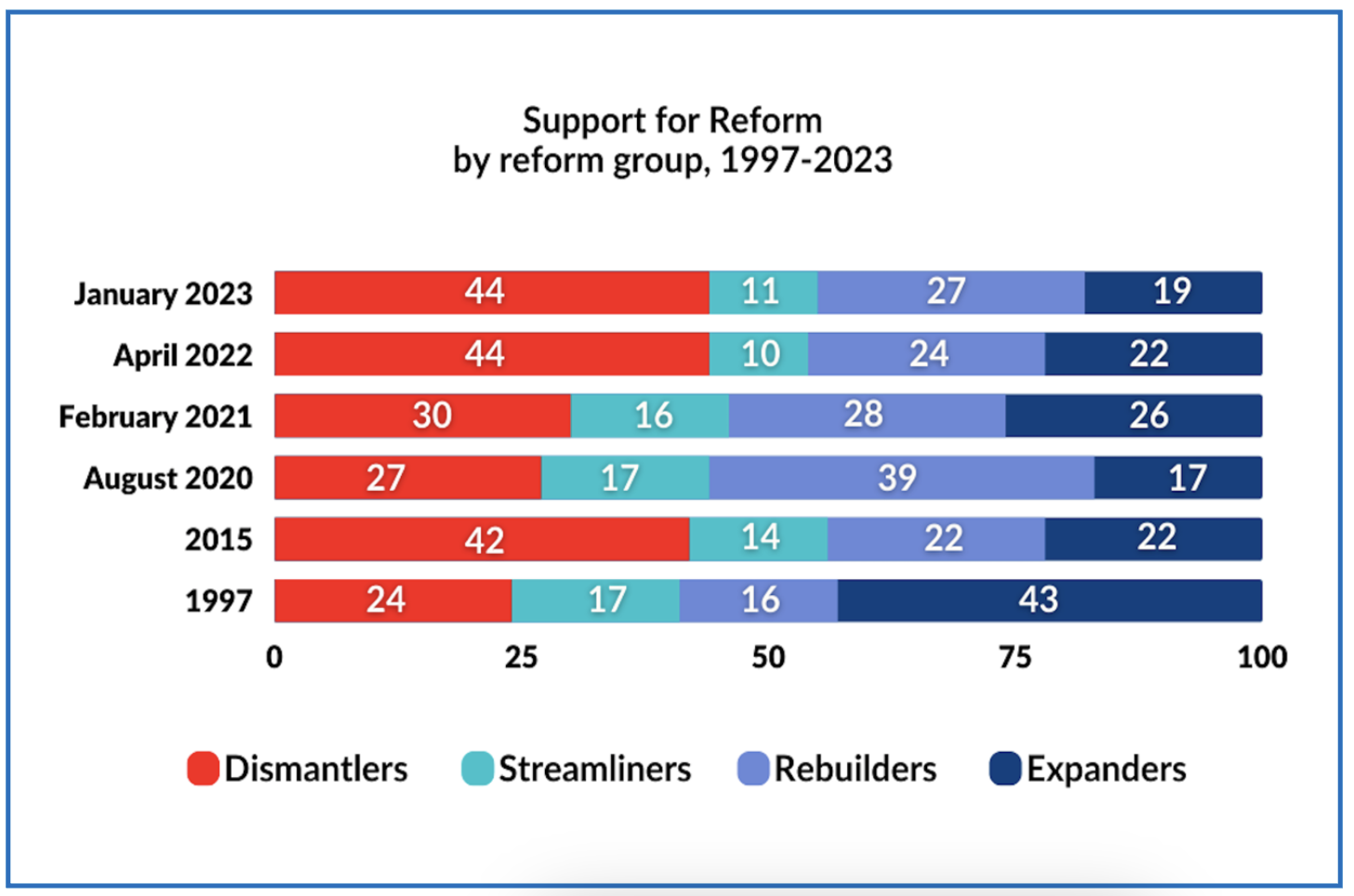
Sean Gladwell/Getty
Biden’s Dilemma, Part 4: The 2024 Election Will Be Fought Between Republican Dismantlers and Democratic Rebuilders
The latest in a series of infographics on Americans’ views of government reform heading into the 2024 election.
President Biden heads toward the 2024 presidential campaign with the federal government’s job rating in decline, support for a smaller government increasing, and the demand for major government reform at a 30-year high. This series of charts and graphs explores the current landscape when it comes to Americans’ views of government reform.
Public support for bigger or smaller government combines with demand for reform to create four reform positions: Rebuilders (those who support a bigger government that delivers more services, but think it needs major reform); Streamliners (who want a smaller government that delivers fewer services, but think government is basically sound); Expanders (who support a bigger government and think it is basically sound); and Dismantlers (who want a smaller government and think it needs major reform).
Like the tides of government reform that generate new laws, rules, executive orders and blue-ribbon commissions, each of the four positions generate campaign promises and slogans. Jimmy Carter focused on streamlining in calling for a competent, compassionate, lean and tight government. Al Gore was a rebuilder, promising a government that “works better and costs less.” Donald Trump fell into the dismantling category, promising to “cut so much your head will spin.” Biden, with his “build back better” agenda, is an expander.
The distribution of Americans into the four categories varies over time. According to my analysis of a January 2023 SSRS survey of 1,000 randomly selected respondents, 44% of respondents supported dismantling, 27% expanding, 19% rebuilding and 11% streamlining.
Despite continued demand for major government reform during his first two years in office, Biden has yet to embrace a reform agenda that might bring small-government streamliners and reform-minded rebuilders together on government reform.

The trend lines and analyses presented in this series come from stand-alone random-sample surveys conducted by Lake Research Partners, Maguire Research Services, the Pew Research Center, SSRS, and the University of Pennsylvania Annenberg Public Policy Center. Occasional data points were also harvested from search engines managed by survey aggregators such as PollingReport.com, the Roper Center’s iPOLL database, and publicly available Pew Research Center surveys dating back to 1997. All survey findings were based on random-sample surveys of at least 1,000 respondents interviewed by cell phone and landline, with estimated error rates of 3% to 4% at a 95% confidence level.
NEXT STORY: HHS to Help Launch National Abortion Hotline







